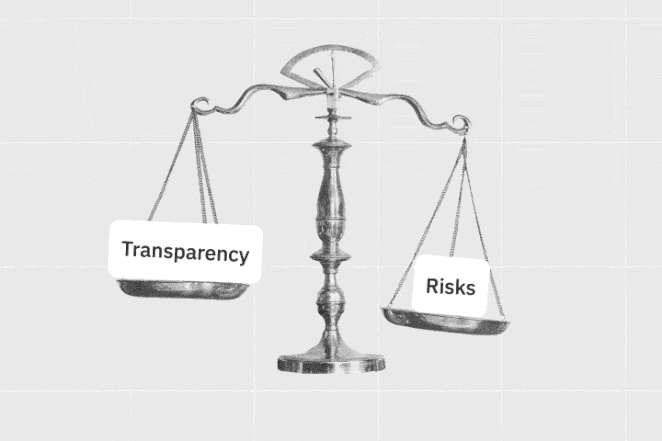After two years of slower, more cautious dealmaking, 2025 is shaping up to be a pivot point for Healthcare M&A. Confidence is back. Nearly 76% of healthcare and life sciences executives expect more M&A activity in 2025 than last year, according to KPMG’s 2025 Healthcare & Life Sciences Investment Outlook.
Analysts from Bain, Deloitte, and PwC all suggest the same thing: healthcare in general—and M&A in particular—is entering a new phase. This article breaks down what’s driving the optimism, what risks still lurk under the surface, and where we’ll likely see the most activity—from distressed hospital deals and “smaller, smarter” biotech buys to private equity’s continuing to hunt for scalable platforms. It’s not all smooth sailing. But for anyone in the M&A trenches, 2025 may finally be the year worth gearing up for.

The Return of Strategic Deal Activity
Several structural factors are driving renewed M&A activity in healthcare this year. Here's what you should be tracking if you’re in strategy, private equity, or enterprise leadership.
1. Economic conditions are changing
Financing constraints were one of the biggest obstacles in 2023–2024. That’s changed. Inflation is lower, and the Federal Reserve has started cutting interest rates, creating better leverage conditions for both strategics and sponsors. Healthcare Brew notes investor confidence is rising in parallel with macroeconomic stability.
There’s also a long-term demand signal: aging populations and GDP recovery are driving consistent growth in healthcare consumption. That’s not changing anytime soon. Alvarez & Marsal calls out this demographic trend as one of the most persistent M&A tailwinds.
2. AI and digital infrastructure are now competitive requirements
Healthcare orgs are no longer experimenting with AI—they’re buying companies that already have working tech. M&A is a fast way to bring in capabilities like AI-powered diagnostics, clinical automation, and care personalization.
Telemedicine, digital health platforms, and remote patient monitoring are still high on buyer priority lists—especially where reimbursement models are evolving. Colliers reports that these tools are driving operational efficiency and enabling care models that scale better than physical locations.
3. Consolidation is accelerating across subsectors
In pharma, M&A is the realistic answer to upcoming patent cliffs. Late-stage biotech firms—especially those focused on oncology, gene therapy, and rare diseases—are getting acquired to fill pipeline gaps. PwC points to this as a top area for strategic transactions in 2025.
Hospitals are consolidating too—but mostly out of necessity. Financial strain, labor shortages, and rising costs are pushing smaller systems to sell. The result: large regional health systems acquiring distressed hospitals and outpatient centers to preserve patient access. Juniper Advisory expects this trend to continue throughout the year.
4. Private equity is deploying capital at speed
Sponsors sat on the sidelines in 2023. That’s no longer the case. PE firms are aggressively targeting specialty physician platforms, health tech, and asset carve-outs. Chief Healthcare Executive notes that scalable, tech-enabled service providers are top targets.
There’s also an increase in buyouts of divested non-core assets from strategics—especially where operational turnaround potential exists. Epstein Becker Green confirms that sponsors are using unique deal structures to optimize value from non-core, stable cash flow assets.

M&A Pitfalls That Matter
The market may be heating up, but not every deal is closing—and not every integration is working. Here’s what continues to block or break healthcare M&A in 2025.
1. Antitrust enforcement is lighter—but not gone
Regulatory pressure has eased somewhat, but it hasn’t disappeared. Hospital deals are still being examined closely—especially in regions where one system could dominate. Large-scale horizontal mergers need to clearly demonstrate how they’ll improve access to care or reduce costs. If a deal looks like it could reduce competition or drive up prices, expect it to raise red flags.
For buyers, that means more prep work such aseconomic impact modeling, public benefit narratives, and proactive community engagement.
2. AI in due diligence adds speed—and risk
AI is speeding up diligence cycles. It’s being used to review contracts, surface liabilities, and benchmark financials faster than human teams could manage. But there’s a catch: compliance teams are flagging data governance issues. Chief Healthcare Executive reports that AI-led diligence is now a regulatory concern—especially in deals involving sensitive health data or cross-border infrastructure.
Healthcare buyers need to treat AI tools like any other vendor: validate compliance, document processes, and prepare for audits.
3. Hospital deals keep failing post-announcement
Hospital M&A remains one of the riskiest categories in the sector. Juniper Advisory notes that over 10% of announced deals were terminated —usually due to deteriorating financials or lack of alignment between leadership teams.
Many distressed sellers enter negotiations without a clear strategy, and buyers underestimate the complexity of integration. If there's no shared operating model or roadmap for outpatient growth, the deal rarely sticks. Expect acquirers to focus more heavily on integration planning before signing in 2025.

Sector Trends Worth Tracking
The 2025 healthcare M&A surge isn’t hitting every segment equally. Here’s where capital is flowing and why.
1. Pharma’s pipeline problems are driving biotech deals
Big Pharma’s on a deadline. An estimated $300 billion in drug revenue is at risk as patents expire by 2028. The fix? Acquiring late-stage biotech startups with promising therapies. PwC highlights oncology, gene therapy, and rare diseases as hot spots.
At the same time, there’s a shift in focus—divesting low-growth or non-core divisions to double down on high-potential therapeutic areas. Translink CF confirms that life sciences companies are pruning portfolios to stay competitive.
2. Medical facilities are still consolidating—especially the struggling ones
Hospitals aren’t done merging. Smaller systems under financial pressure are actively seeking buyers or being pushed into deals as a matter of survival. Distressed asset sales are driving regional health system growth, with larger players stepping in to stabilize access and operations.
At the same time, buyers are looking for more than just square footage. They’re after scale—especially when a deal brings in high-demand outpatient capacity or specialty services. It’s not just about expanding locations anymore; it’s about integrating services that create real operational value.
3. Digital health is still one of the busiest M&A categories
No surprise here. AI-powered diagnostics, automation tools, telemedicine platforms, and revenue cycle tech are still hot M&A targets. What’s different now is the focus: buyers are prioritizing platforms that show clear, measurable ROI—particularly in patient engagement and back-office efficiency.
This isn’t about chasing shiny new tech anymore. It’s about acquiring solutions that cut costs, scale efficiently, and deliver value right out of the gate.
The Outlook: What’s Different This Time
The return of M&A momentum in 2025 isn’t just about better macro conditions. It’s about operators recalibrating expectations after two volatile years.
Capital is moving again—but the playbook has changed. Large-scale horizontal mergers are harder to push through. AI-driven due diligence is speeding up timelines but introducing new compliance risks. And integration challenges are no longer a footnote—they’re a dealbreaker.
The most active buyers this year aren’t chasing size—they’re targeting fit. That means smaller, more strategic deals in high-yield sectors like biotech, outpatient care, and health tech. It also means heavier pre-close diligence and more disciplined integration planning.
For deal teams, the takeaway is simple: volume may be up, but execution risk hasn’t gone away. The best outcomes in 2025 will come from knowing not just what to buy, but exactly how to operate it post-close.







.png)

.webp)








